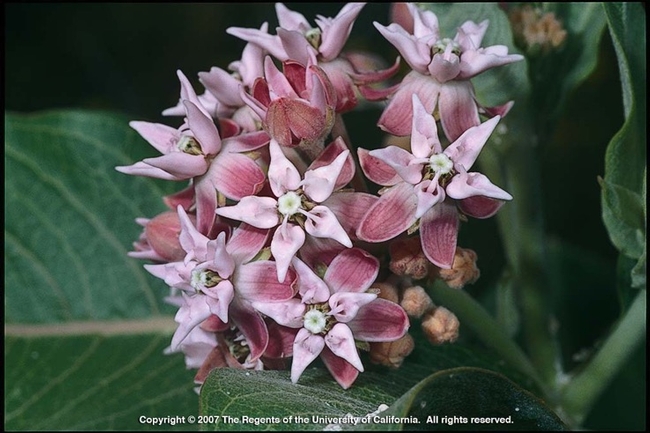Milkweed For Monarchs
By Lee Oliphant UCCE Master Gardener
I'd like to plant milkweed as a food source for monarch butterflies. Is there a particular species of milkweed I should plant? Pam S., Cambria
Because of the declining population of the monarch butterfly (Danaus plexippu), it's understandable that home gardeners are looking for ways to help these lovely creatures survive. The monarch is the only butterfly known to migrate thousands of miles to overwinter in warmer climates. The species can be negatively impacted by drought and pesticides used along roadsides. We can help the monarch by reducing our use of pesticides and herbicides, adding nectar plants to our gardens, and incorporating milkweed, the host plant for monarch larvae (caterpillars), in our landscapes.
The monarch lays eggs on milkweed. The eggs hatch and develop into larvae which then devour the milkweed. Larvae form cocoons then transform into the lovely butterfly we all know and love. The mature butterfly then continues its multi-generation migration north for the summer.
Whether to plant native milkweed or non-native milkweed in your garden has been a controversial topic. Monarch's appetites do not seem specific to any particular species of milkweed. They will lay their eggs on native milkweed (Asclepias californica sps.) or on tropical varieties, considered perennials in our temperate climate. Planting natives is usually preferable to exotics as they grow with little care and are less likely to become invasive. In addition, some believe the non-native varieties of milkweed cause the monarch to loiter rather than continue on their migration. Because they are perennials, they tend to harbor parasites from season to season, which may be harmful to the monarch.
California has 15 native milkweed species. The six most common native milkweed are: Asclepias californica (California milkweed) Asclepias cordifolia (purple milkweed or heartleaf milkweed) Asclepias eriocarpa (woollypod milkweed or Indian milkweed) Asclepias fascicularis (narrow-leaved milkweed) Asclepias speciosa (showy milkweed) and Asclepias vestita (woolly milkweed).
Looking to the experts on this subject, Professor Art Shapiro at UC Davis, is an authority on California butterflies. He suggests that if you plant tropical milkweed, it should be cut back several times a year to promote new growth. Pruning discourages the accumulation of parasites that are harmful to the butterfly and will encourage a healthier and more robust plant.
